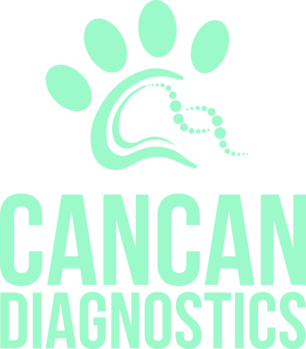The Evolution of Veterinary Oncology: From Traditional to Modern Diagnostics
Veterinary oncology has undergone a remarkable transformation over the years, particularly in the realm of canine cancer diagnosis and treatment. This evolution mirrors the advancements in human oncology, albeit at a different pace and scale. From the days of relying solely on surgical interventions to the current era of next-generation sequencing and liquid biopsies, the journey of veterinary oncology is a testament to the relentless pursuit of better, more effective ways to manage cancer in our canine companions.
The Early Days: Surgery as the Cornerstone
In the early stages of veterinary oncology, options were limited. The primary mode of cancer treatment in dogs was surgery. Vets would often rely on their skill and experience to remove tumours, aiming to excise cancerous tissues while preserving as much healthy tissue as possible. However, the scope of surgery was limited. It was most effective for localised, solid tumours and less so for cancers that had metastasised. The success of these procedures depended heavily on the tumour’s location, size, and type, as well as the overall health of the animal.
The Introduction of Human-Based Pharmaceuticals
As veterinary science progressed, there was a gradual introduction of human-based pharmaceuticals and medications into veterinary practice. Chemotherapy, which had been a mainstay in human cancer treatment, started to find its place in treating canine cancers. These drugs were used to target rapidly dividing cancer cells, though they often came with side effects due to their non-specific action on healthy rapidly dividing cells as well.
Radiation therapy also began to be utilised, offering a non-surgical option for treating certain types of tumours. These advancements marked a significant step forward, as they provided additional tools for veterinarians to combat cancer more effectively.
The Age of Personalised Medicine: Next-Generation Sequencing
The real game-changer in veterinary oncology has been the advent of next-generation sequencing (NGS). This technology allows for the comprehensive analysis of the genetic makeup of a dog’s tumour. By understanding the specific mutations and pathways involved in each individual cancer, veterinarians can tailor treatment plans more precisely. This approach, known as personalised or precision medicine, has been revolutionary in human oncology and is now making waves in the veterinary field.
NGS has enabled a more nuanced understanding of the heterogeneity of tumours, which in turn has led to the development of targeted therapies. These therapies are designed to specifically attack cancer cells based on their genetic characteristics, thereby reducing harm to healthy cells and minimising side effects.
Liquid Biopsy: A Leap Forward in Disease Monitoring
Another groundbreaking development in canine oncology is the liquid biopsy. This minimally invasive technique involves analysing a blood sample for circulating tumour DNA (ctDNA) or other cancer-related biomarkers. Liquid biopsies offer a wealth of advantages over traditional biopsy methods. They are less stressful for the animal, carry fewer risks, and can be performed more frequently to monitor the progression of the disease or the effectiveness of treatment.
This technology is particularly valuable in tracking the evolution of cancer in real-time. It allows for the early detection of resistance to therapies, guiding veterinarians in adjusting treatment plans promptly. Liquid biopsies represent a significant step towards more dynamic, responsive cancer care in dogs.
The Future of Veterinary Oncology
The evolution of veterinary oncology from traditional surgeries to the application of advanced diagnostics like next-generation sequencing and liquid biopsies reflects the broader trends in medical science. As we continue to learn from human medicine and invest in veterinary research, the prospects for even more effective, personalised treatments for canine cancers look promising.
In conclusion, the journey of veterinary oncology is one of continuous learning and adaptation. It underscores the commitment of the veterinary community to provide the best possible care for our beloved pets. As we embrace these modern diagnostics and treatments, we move closer to a world where cancer is no longer a definitive end but a manageable condition, even in our canine friends.


